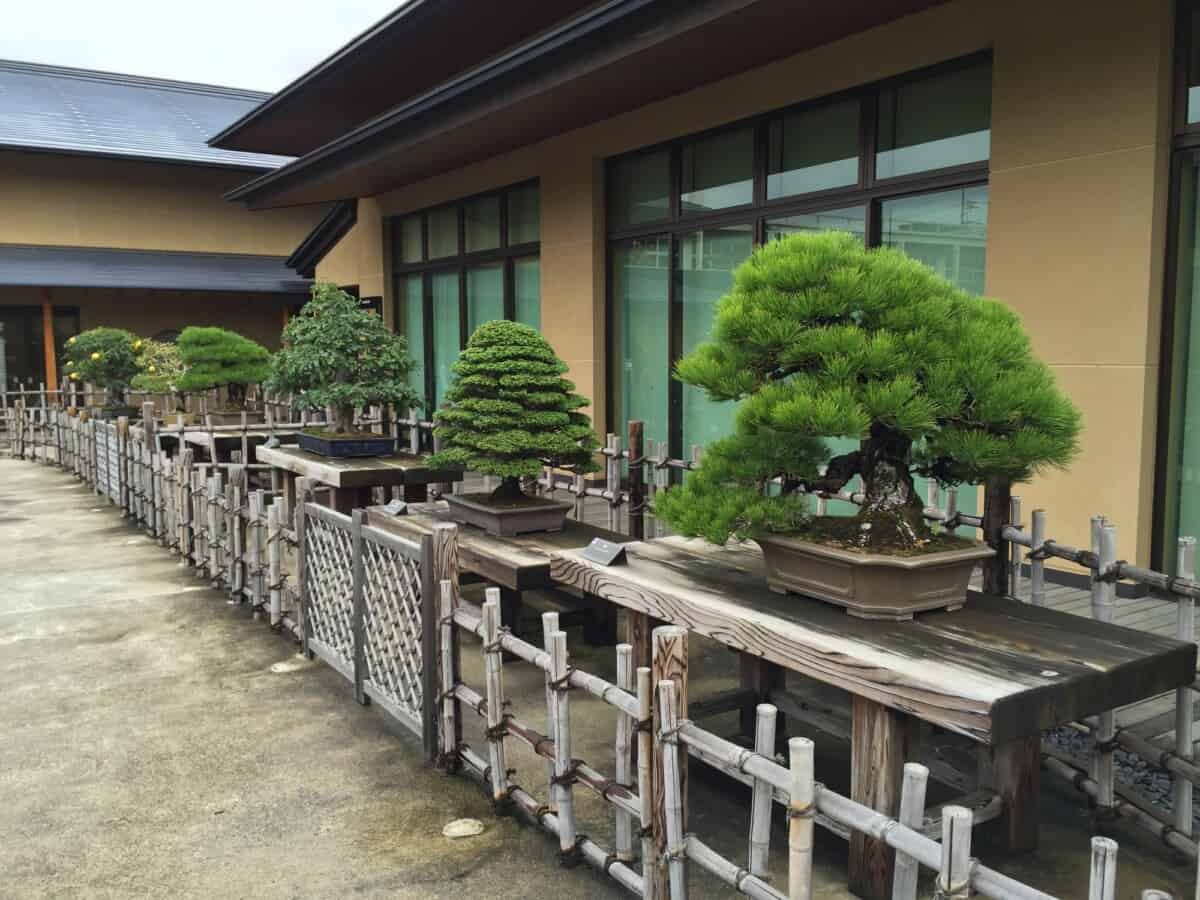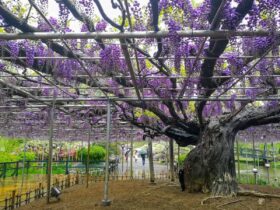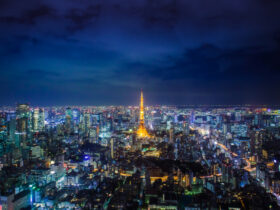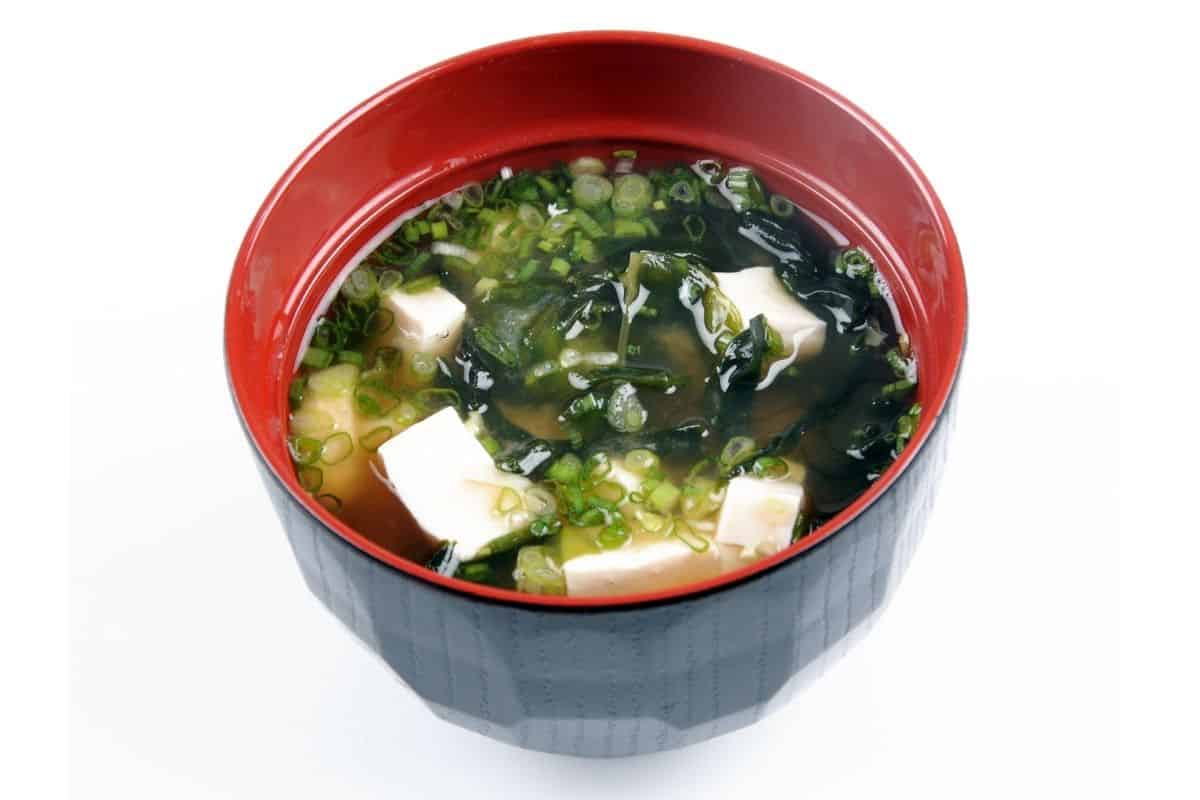Bonsai culture across Japan is evident everywhere you go within the country. These are those iconic, tiny trees mindfully placed into beautiful ceramic containers. These aren’t genetically dwarfed plants but rather miniature yet realistic representations of a real tree in nature. But these are so much more than just “mini Japanese trees.”
It’s a personalized oasis reflecting a bonsai artist’s favorite landscape or season, for example. For over a thousand years, bonsai trees have given the viewer and gardener the opportunity to interpret the experience in a personal way. Each one is an amazing feat of sheer human will and imagination.
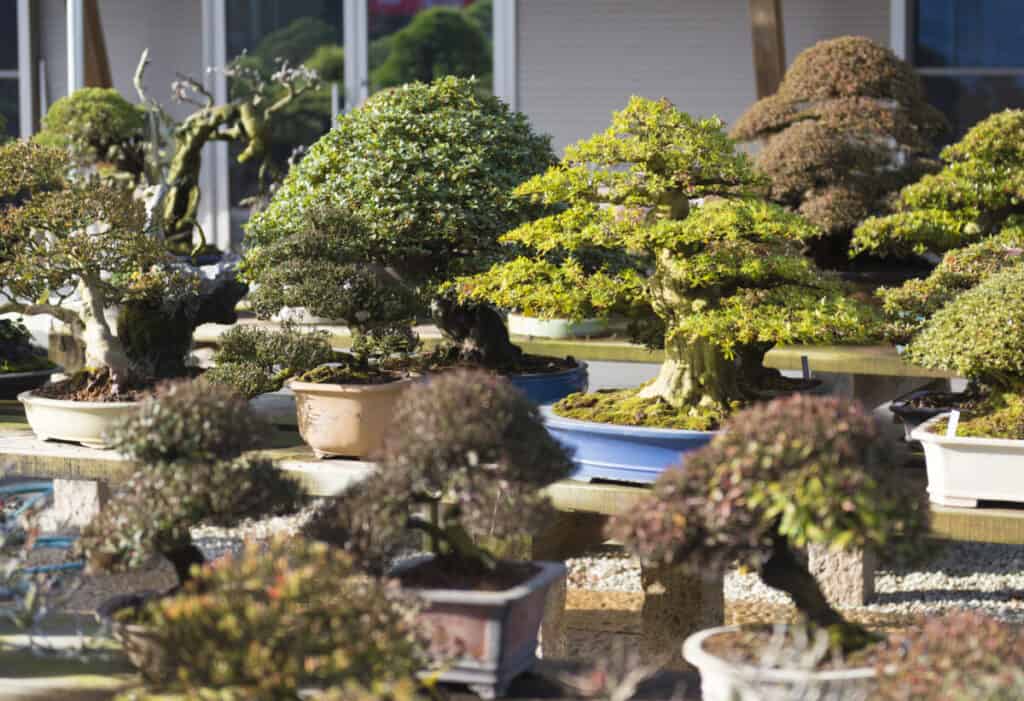
Definition And Meaning of a Bonsai
Bonsai (盆栽) are diminutive potted plants that people care for in such a way as so they look like tiny trees. The translation of the word comes in two parts.
Bon (盆) is a thin bowl or modified dish. Sai (栽) indicates a tree or planted growth. Therefore, the whole word “bonsai,” literally denotes a “planted tree in a shallow container” or “tray planting.”
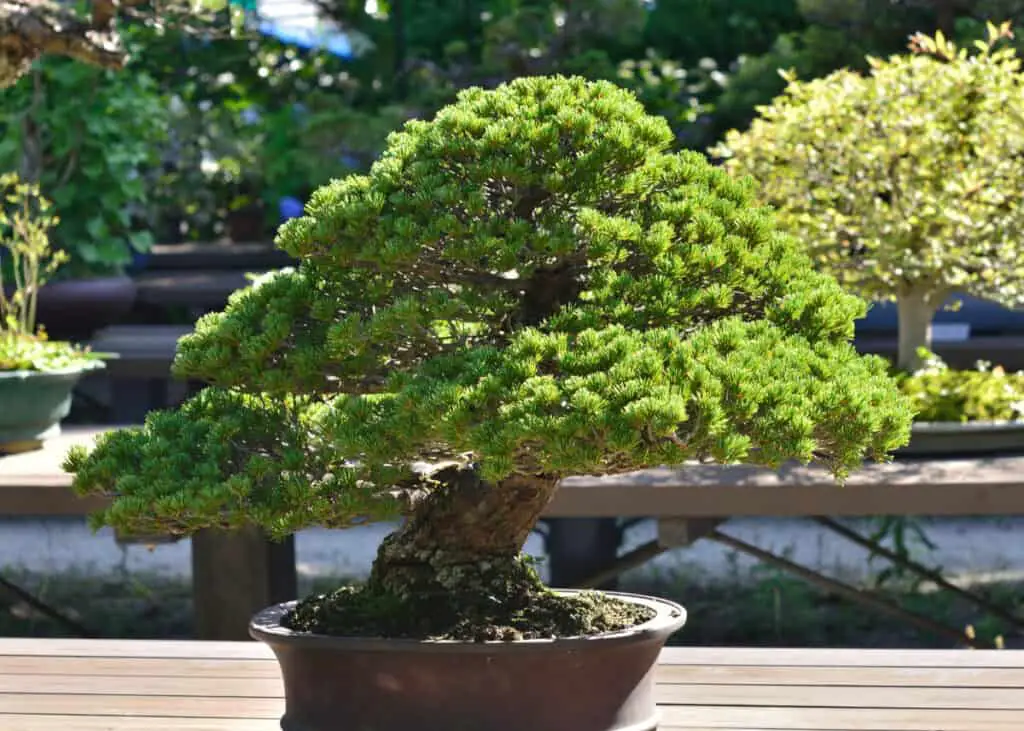
Layers of Meaning
But, this is the translation of what a bonsai is, there are many layers of meaning behind it because of their ideal use in meditation and deep contemplation.
Therefore, what a bonsai means will be up to the gardening artist and the people who see this evolving work of art in action.
Bonsai trees replicate nature while showing little to no signs of human intervention. A bonsai contains this naturalness accentuated by human actions. But the intervention doesn’t inhibit or spoil its visual appeal.
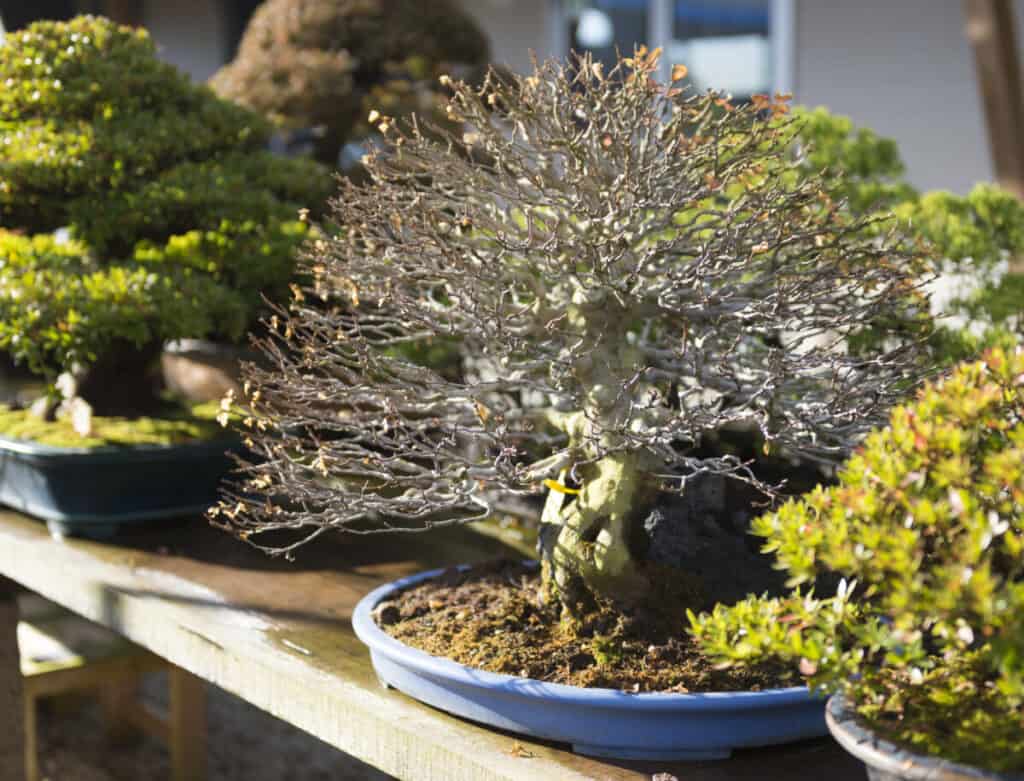
The Creation of a Bonsai
Almost any kind of tree or plant can become a bonsai, it’s not a particular species or variety. But its profile will not have the photographic detail of its larger counterpart.
Yet it has enough features to suggest a fully grown tree. It’s artistic effort combined with knowledge of horticulture that represents something more than itself.
These often have a tree-like style or shape that can or cannot be natural to that specific species of plant which grows in the wild at full size. Its relative smallness makes it portable, which means it’s easier to keep nearby and care for.
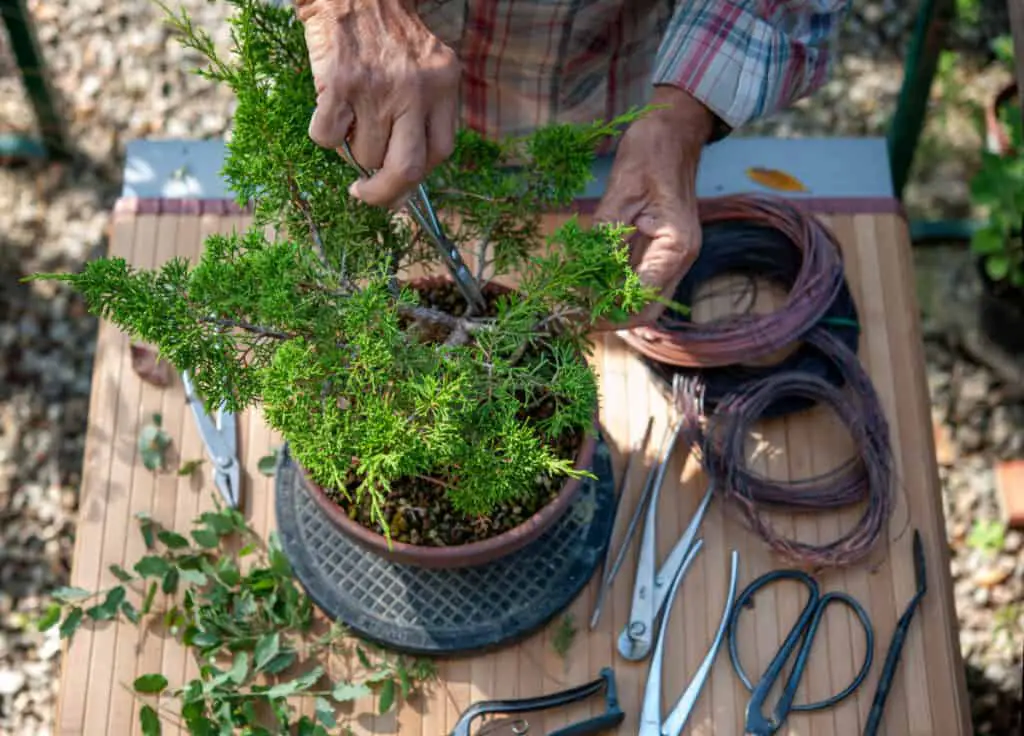
How Bonsais Get So Small
The method by which bonsai trees get so small is in how a gardener cares for the plant. Techniques such as clamping, pruning, pinching buds, wiring branches, and restricting fertilizer are just some of the ways to get the potted plant to its unique and diminutive size.
Most people intentionally maintain the plants to four inches or less, also called “mame” (more on classifications below).
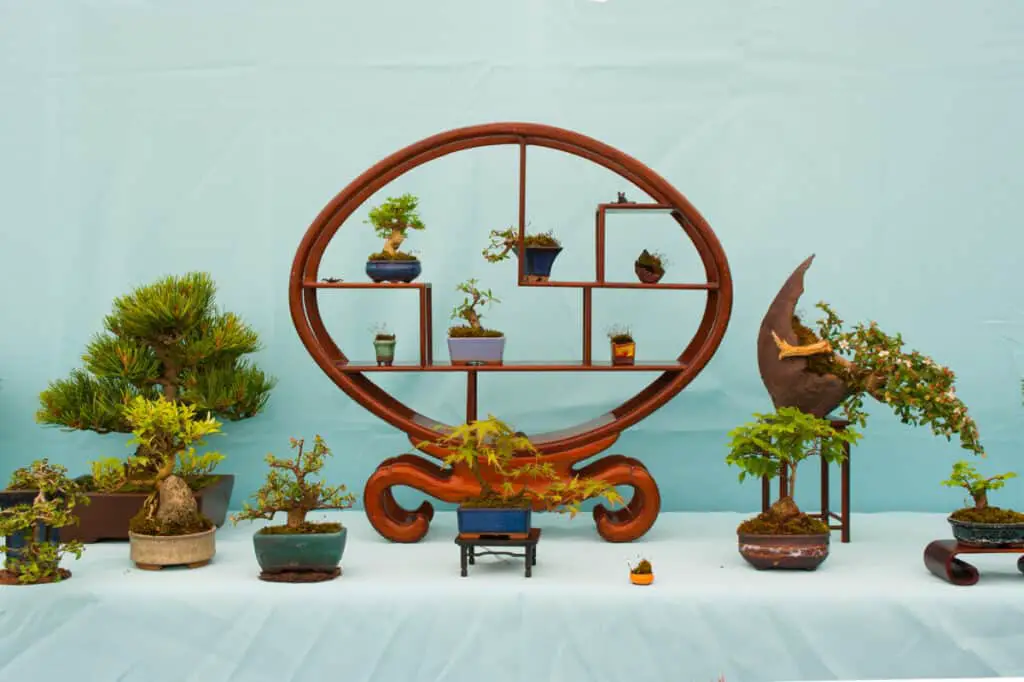
These don’t originate from seed but come from mature trees and woody plants that are at least two years old. All of these methods allow for manipulation of the tree and to maintain its size.
But, they must execute these in such a way as to not be noticeable to the naked eye. However, due to its truncated size and appearance, there are many cautions to be aware of when caring for a bonsai. Regular and irregular watering schedules are interchangeable along with repotting and location changes to optimize sunlight.
Bonsai Styles
In order to understand the beauty of any given bonsai, the Japanese have developed a system of styles and classifications. These features come based on overall design, arrangement, detail, and size.
Therefore, there are principles and rules that one must follow when attempting to care for a bonsai tree. Some of these include things like proportion, symmetry, appearance, balance, and realism.
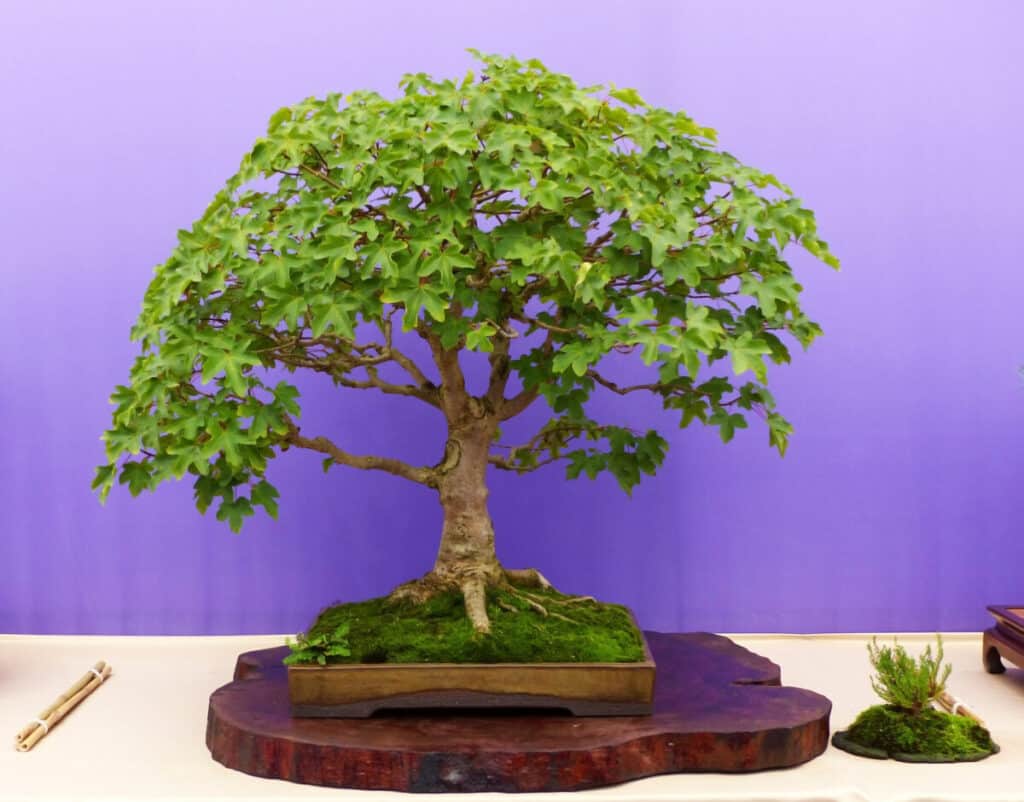
At the same time, the tree shouldn’t look too perfect as there should be a natural effect that’s visible. In regards to design, there are a number of styles. Some of which are:
- Formal Upright: upwards pointing trunk with thick, broad branches at the bottom and thinner branches at the top.
- Informal Upright: incorporates more natural curves in the trunk.
- Slant Style: tree leans in one direction.
- Cascade Style: the tree grows downward and out beyond the bottom of the pot.
- Windswept Style: bonsai looks as if a strong wind sculpted it
Classifications of Bonsai
Bonsai come in various sizes and these have a particular classification to help better differentiate these sizes. The smaller the bonsai, the more abstract it becomes and the less it stands as a precise resemblance of a tree in its natural environment.
| Classification Name | Size |
| Imperial | 60 to 80 inches |
| Hachi-uye | 40 to 60 inches |
| Omono or Dai | 30 to 48 inches |
| Chumono or Chiu | 16 to 36 inches |
| Katade-mochi | 10 to 18 inches |
| Komono | 6 to 10 inches |
| Shohin | 5 to 8 inches |
| Mame | 2 to 6 inches |
| Shito | 2 to 4 inches |
| Keshitsubo | 1 to 3 inches |
Unifying Art And Aesthetics With Gardening And Horticulture
Bonsai trees are a perfect unification of horticulture with art. The best and most ideal masterpieces are those without artifice, affectation, or call attention to the artist in any direct way.
It’s not like a painting or a sculpture, where there is clear evidence of artistic manipulation.
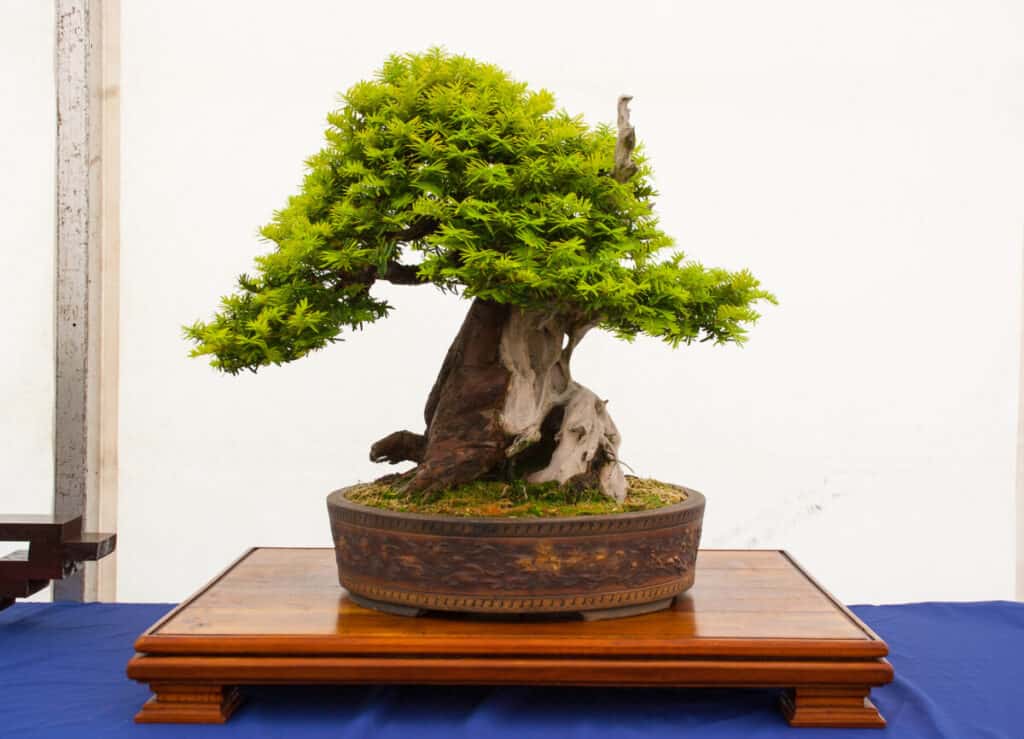
A Hobby for Anyone
Such a pursuit is excellent for one to do solo or as a group effort. What’s great is that they don’t require a lot of experience as the gardener will develop that over time.
It challenge’s one’s skills with nature, design, and aesthetics along with a small investment of time, money, and effort.
An Ever-Evolving Art Form
The age and aesthetics of the bonsai are the crowning features and its glory which lend the bonsai to the favor and treatment by its caretaker.
These are painstaking to care for, requiring meticulous attention to detail and to what the plant needs. This also means that a tree is never fully complete and can undergo several changes throughout its lifetime.
Beauty is in the Details
What makes them so unique compared to other potted plants is the interplay of twisting thick trunks with textured bark combined with the detail of live and deadwood.
The surface roots, branches, twigs, foliage, and delicate, tiny leaves/needles contribute to the diorama going on within the bonsai container.
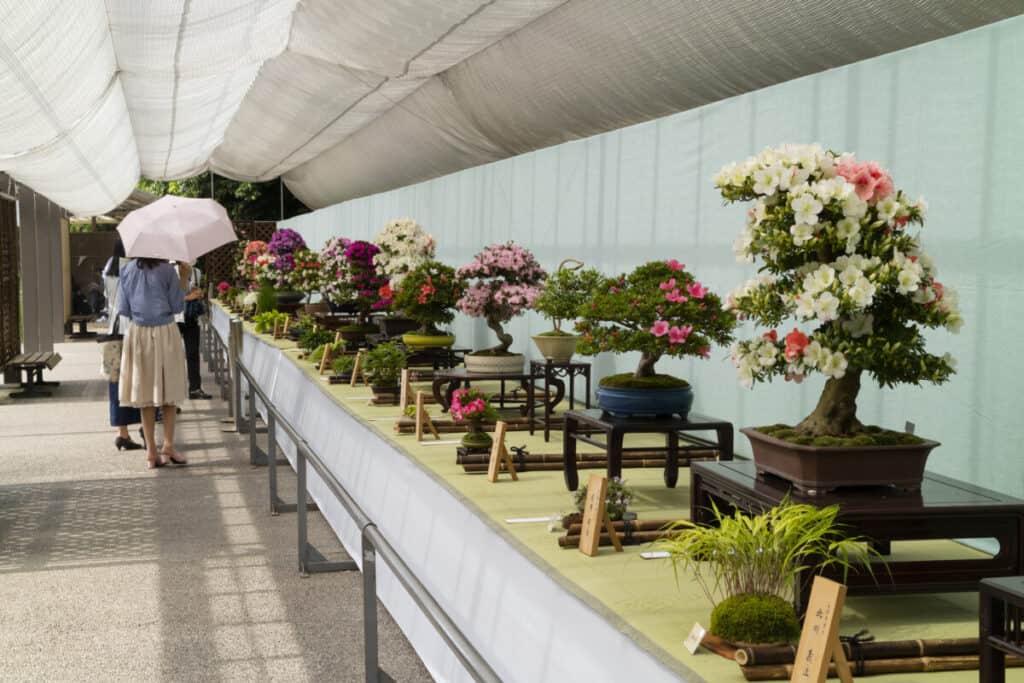
These can sometimes include grafting little flowers, fruits, or cones, adding to the overall effect. But a true bonsai master understands what the plant needs. This includes deciding what to remove from its growth to truncate its size.
History And Introduction of Bonsai Trees
Borrowed and developed from the Chinese practice of Penzai or Penjing, the art of bonsai has a deep historic connection to Japanese culture.
Penzai are much larger, feature figurines, and display in landscape-like form. They have an appearance that’s more natural and wider.
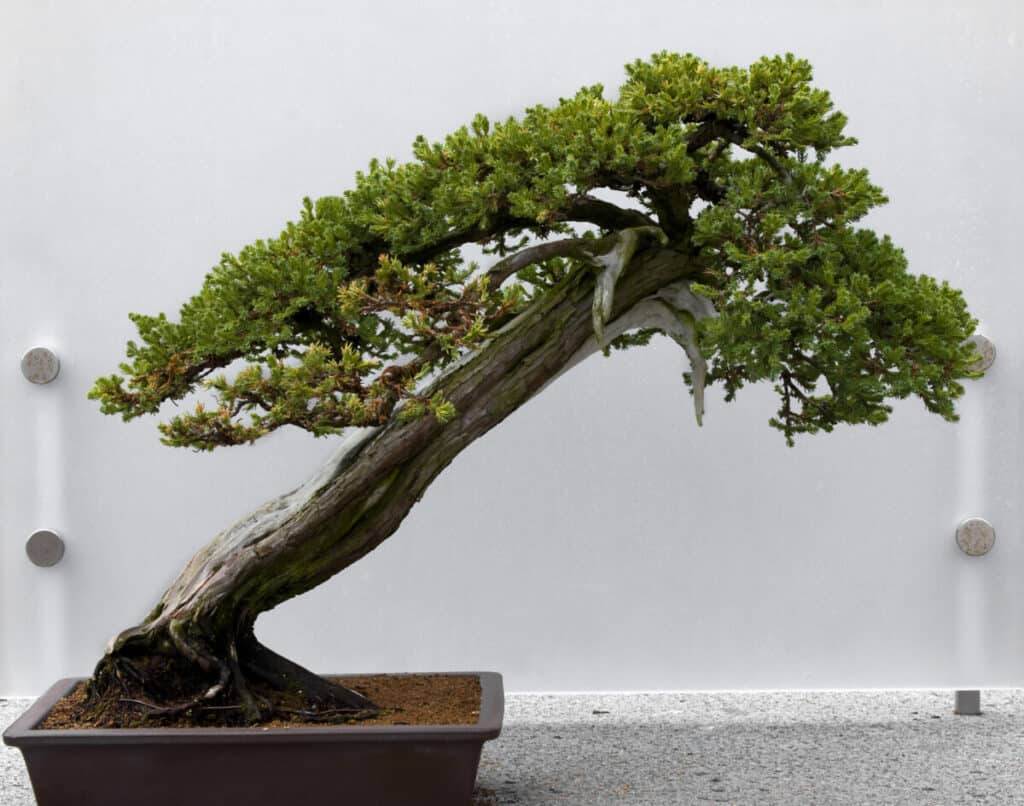
14th Century Popularity
However, this underwent redevelopment under the influence of Japanese Zen Buddhism after its introduction to Japanese culture sometime between the 6th and 8th centuries.
It was at the beginning of the Meiji Restoration in the 14th century that the Emperor encouraged his subjects to practice the are of bonsai.
Zen Buddhist Connections
The patience required for both achieving nirvana in Zen Buddhism and bonsai art coincides beautifully. It brings about and represents the concept of wabi-sabi, or the Japanese paradox of appreciating the perfect within imperfection which is incomplete and impermanent.
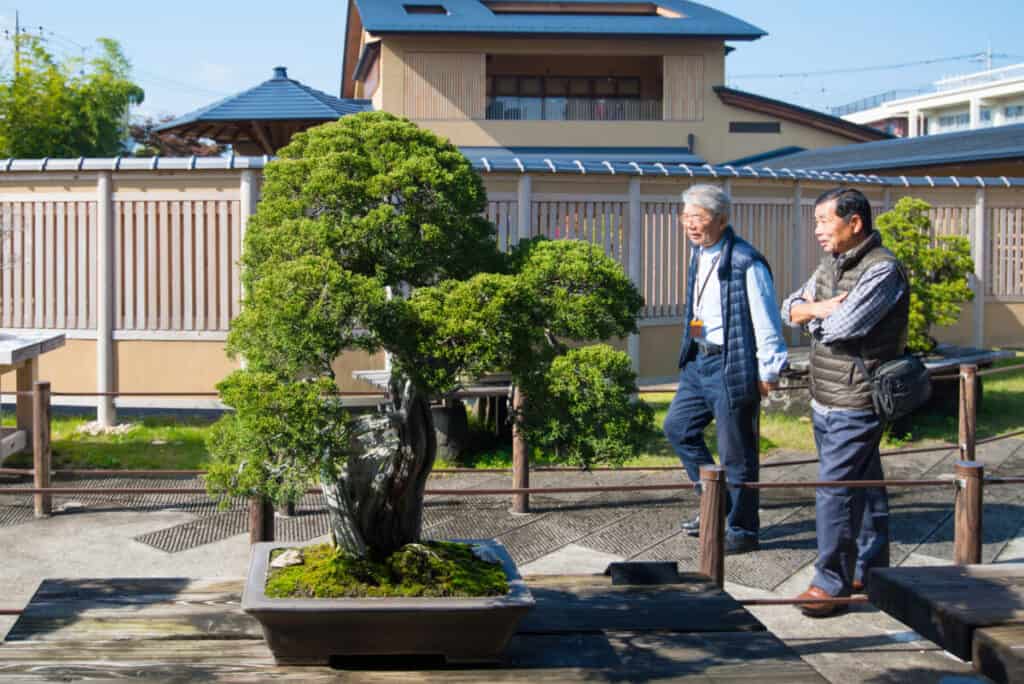
World War II
The art of bonsai was always an outdoor pursuit, its rising popularity made it an appropriate indoor hobby.
This is particularly true after World War II, which gave novices the opportunity to experiment within the confines of their homes.
Where to See Bonsais in Japan Today
The whole of Japan contains a plethora of famous bonsai trees. Many of these you can see on display at the Omiya Bonsai Art Museum (which houses a 1000-year-old bonsai) and the Shunkaean Bonsai Museum.
What’s more, there are several bonsai exhibitions, competitions, and festivals where masters present their works every spring.
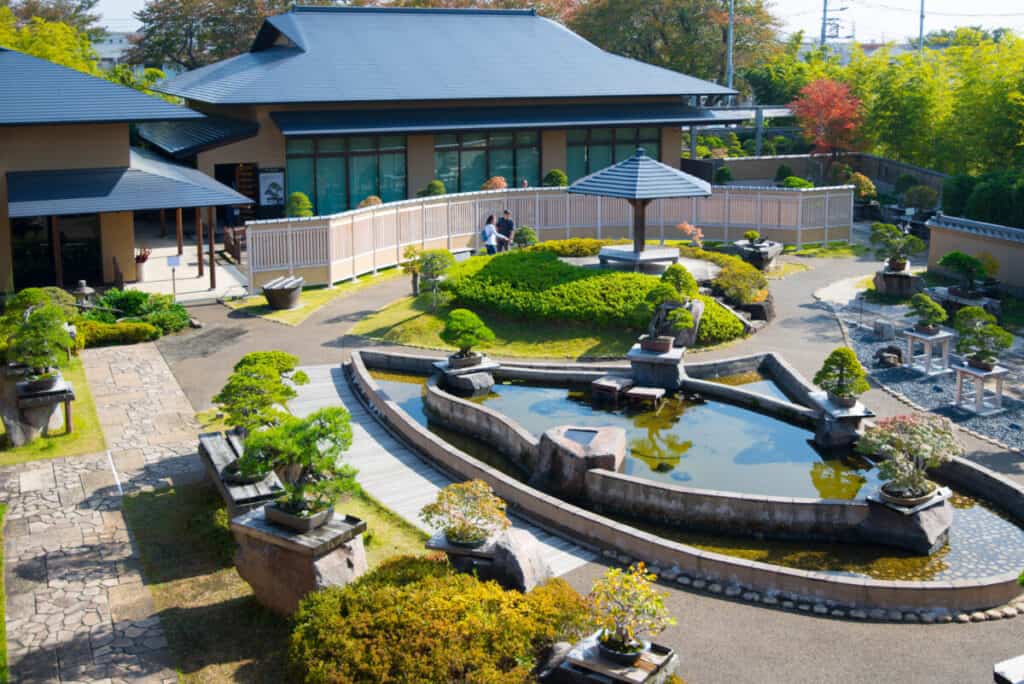
Bonsais Are Everywhere in Japan
However, there are many nurseries and stores that specialize in bonsai trees throughout Japan. Buddhist temples, Shinto shrines, and many rural/residential areas dissplay them everywhere.
For a true Japanese understanding of bonsai trees, you have to visit some of the oldest living specimens.
The Oldest Bonsai Trees
One of these trees is the 400-year-old White Pine Bonsai which survived the Hiroshima bombing (later donated to the USA in 1976).
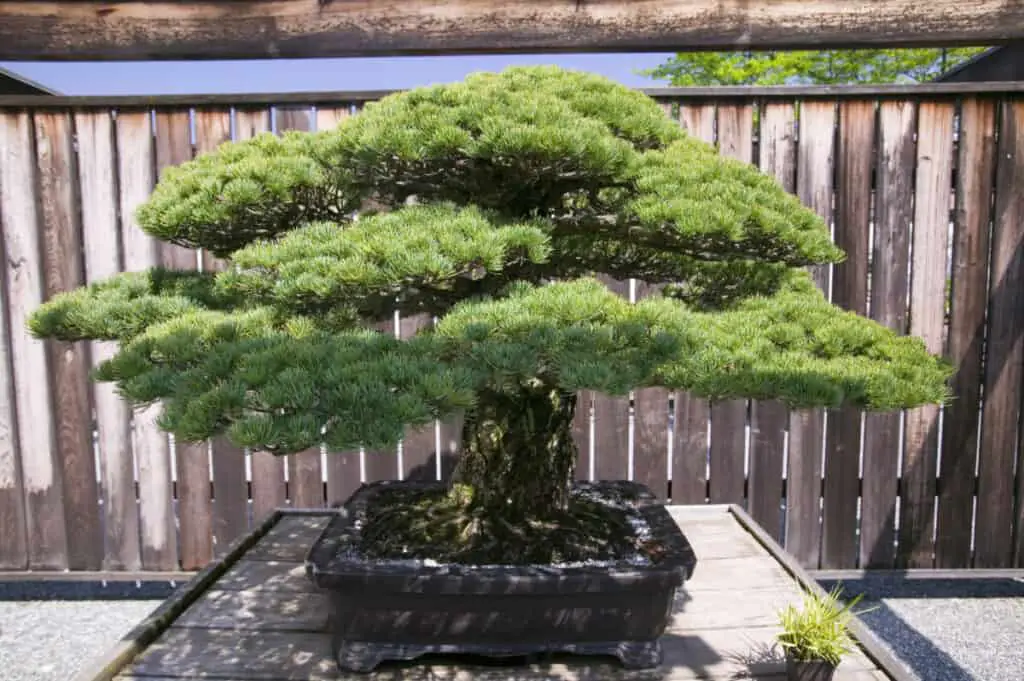
Yet another is 500 years old and deemed one of Japan’s national treasures. This is because it was under the tender care of the 3rd Tokugawa Shogun, Lemitsu, known for closing Japan’s borders in the 17th century.

